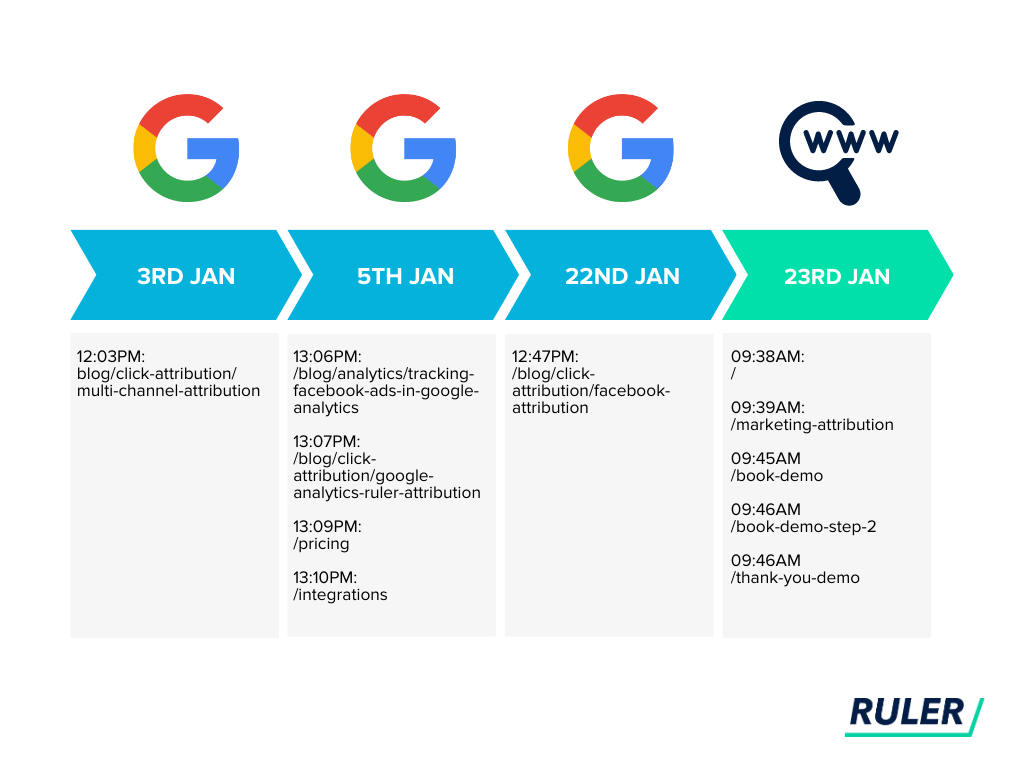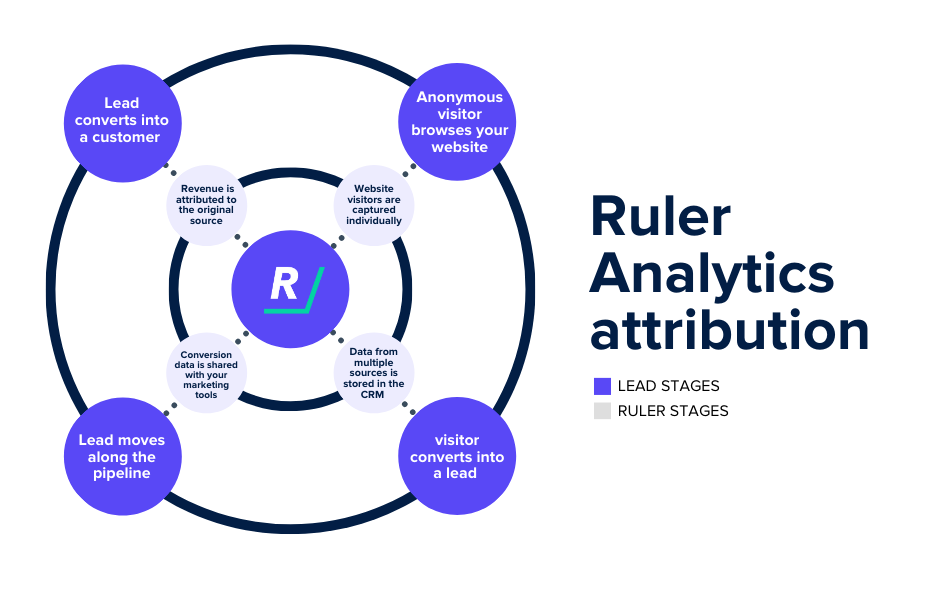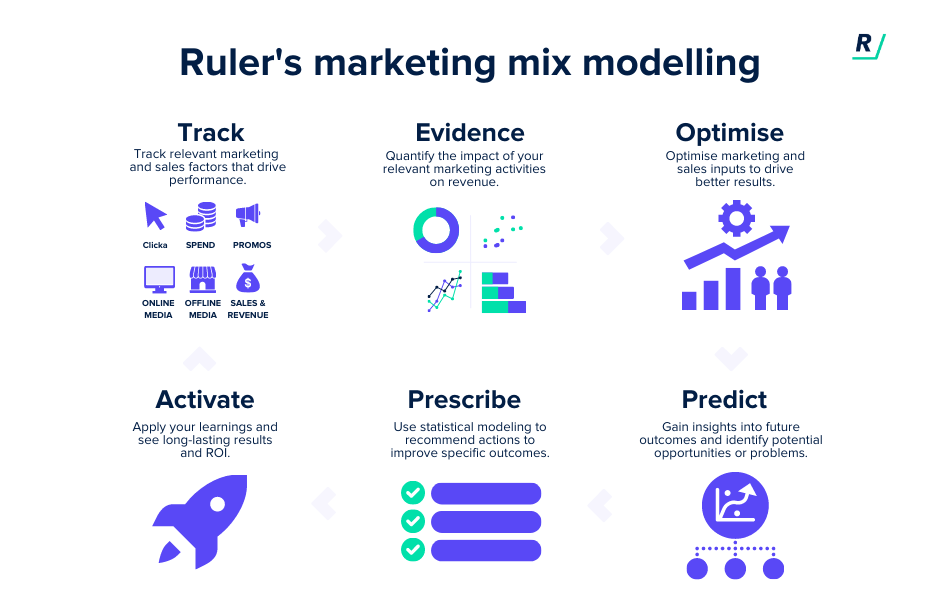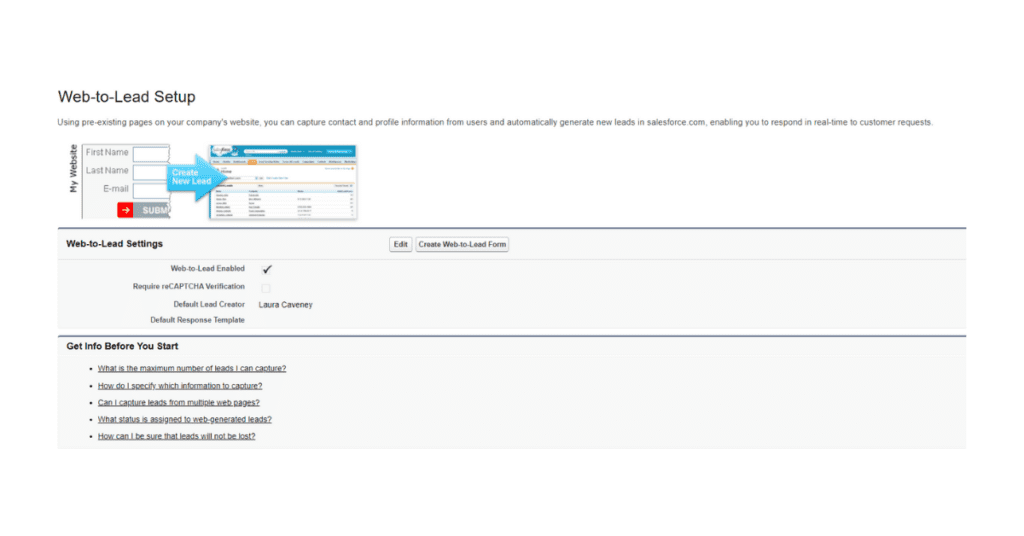Tracking marketing leads is vital to understanding how your marketing is working to impact your bottom line. In this blog, we discuss six easy ways you can track your leads and get more data from your marketing.
Do you struggle to track your leads? Well, you’re not alone.
In fact, we asked marketers just like you what they find challenging and 37% said generating high-quality leads was one of their biggest challenges. And there’s a good reason for that.
If you can’t fully understand the quality of your leads, then you’re going to struggle to find a strategy that consistently brings in high-quality leads.
The trick to this is tracking your leads.
But there’s a hurdle in the way. Many marketers struggle to track their marketing leads, meaning they’re left reporting on engagement metrics like clicks, impressions and likes.
Without proper lead tracking for your marketing, you won’t be able to knuckle down and understand how many sales each channel, campaign and keyword is driving.
This blog will explain:
💡 Pro Tip
Ruler makes the process of lead tracking a whole lot easier. It tracks data on a visitor level, allowing you to successfully attribute CRM leads and revenue back to your campaigns, ad groups, keywords, ads and landing pages
See how Ruler can help you attribute revenue to marketing
A marketing lead is an individual who shows interest in a product or service making them a potential customer.
Instead of selling directly to a customer onsite, some businesses have to generate leads that go on to speak directly to a sales team. This poses a variety of challenges for marketers.
Related: Lead value: what is it and how to track it
91% of marketers say that lead generation is their most important goal but 37% of marketers say that generating high-quality leads is one of their biggest challenges.
Marketing leads can come into a business via a variety of different channels and conversions.
💡 Get further insights
We performed a study using our analytics and attribution product to reveal how several industries drive conversions and leads using various marketing channels.
Download the conversion benchmark report to see the results
From phone calls and forms, to organic or paid, marketing is the driving force behind lead generation. Businesses need to drive users from the top of the funnel all the way to a sale, or the bottom of the funnel.
Lead tracking is the process in which marketers track their leads across their full customer journey.
It begins with tracking a lead’s initial touchpoint and ends with them closing into revenue.
By tracking your lead’s full customer journey, you’ll better understand how your marketing is driving new leads and impacting pipeline generation. It will also help you to improve your sales funnel to drive new sales quicker.
It will also help you to improve your sales funnel to drive new sales, quicker.
Tracking leads can be achieved in a multitude of ways. Most frequently, marketers track leads once they’ve converted. That means they only get a view of their activity post-conversion.
However, what your lead was engaging with prior to conversion is essential to know.
Why?
Well, you’ll likely want to know what kickstarted their customer journey with you. It’ll help you understand where leads are coming from.
Let’s take a journey from Ruler to truly demonstrate the importance of lead tracking from start to finish.
If you’re not familiar with Ruler, it’s an attribution and marketing modelling solution that tracks your leads as they interact with your company at every touchpoint.

In the example above, we can see this lead’s first interaction with our website. They completed a Google organic search and landed on our blog post about multi-channel attribution.
Over the course of three weeks, this lead made three subsequent visits and interacted with a number of pages across our website.
Eventually, this lead was converted into a demo. If it wasn’t for Ruler, this lead would have likely gone unattributed to “direct” in our CRM. Fortunately, that wasn’t the case.
Thanks to Ruler, we’re able to see:
💡 See it in action
We have a complete guide on how to track where your leads came from with Ruler, which explains the process in more detail. If you have any questions about Ruler, you can also book a demo and talk to us directly.
Book a demo to see how it works
Your lead data is out there, but it’s disconnected.
Think about how many steps leads go through now to convert from an anonymous website session to a customer.
Tracking all of that plus conversions isn’t easy because your apps aren’t speaking to each other.
Let us explain with some examples.
If you don’t rely on offline conversions, well then, lucky you. But if you use conversions like phone calls, live chat or form fills, they can be hard to track.
We’re not talking about tracking lead volume here, we’re talking about lead quality.
💡 Get further insights
We’re kind of experts in offline conversion tracking. Learn more about them and how you can better track them as part of a marketing journey with our free eBook.
While you might have something set up to track form fills, how are you linking the person behind that form fill back to a marketing channel? When that person converts into revenue, you won’t be able to attribute it back.
Related: 5 ROI tools to link marketing to revenue
And you know what that means? Inaccurate ROI leads to poor optimisation of your marketing efforts.
And this inaccuracy carries across your other conversion points, too.
If you’re missing tracking conversions, then you’re already starting on a back foot.
Even if you work in eCommerce, where tracking your marketing is much simpler as it’s pulled directly into Google Analytics, you still haven’t got full visibility of your marketing leads.
Remember, most customers go through the buyer’s journey which consists of the awareness stage, the consideration stage and the decision stage.
Each of those stages could be made up of multiple touchpoints, leaving you with reams of data that you can’t get visibility on.
The issue with tracking leads is that the data all exists, but it isn’t easily viewed in one place. Without this key data, you’re marketing blind.
We compiled six easy ways to track your marketing leads so you have greater visibility of where they came from, and how much revenue they convert into.
Were you surprised, or did you see this one coming?
The best way to track every lead and interaction is with a marketing attribution tool.
Related: What is marketing attribution? A guide to models, tools and benefits
Marketing attribution is a key tool used by more and more marketers each year.
Our data backs it up. 57% of marketers use an attribution tool to measure marketing effectiveness. In addition to this, the global marketing attribution software market is expected to reach $7.2 billion by 2028.
Marketing attribution puts the data in your hands by automatically and accurately linking your leads and closed revenue to your marketing touchpoints.
It allows you to view individual leads and full customer journeys and get complete visibility on how channels, campaigns and even keywords drive clicks, leads and sales.
We briefly touched upon Ruler earlier, but to show you how marketing attribution works, let’s look at its process in more detail.

Ruler tracks your visitors from the moment they arrive on the site to the point of conversion, capturing data such as the channel that brought them to the site, the pages they visited, and the actions they took.
It then passes the marketing source data you’ve captured on your leads to your CRM and other marketing tools. This allows you to enrich your leads and opportunities with attribution data so you can see exactly how your marketing impacts pipeline generation.
When a lead is marked as closed as won, the revenue data is sent back to Ruler. With revenue and opportunity data in Ruler, you can easily measure and validate the impact of your marketing sources, campaigns and keywords.
Attribution is the great first step in tracking your leads. But what happens if a lead views a social media post or TV advert and converts at a later date?
With traditional attribution, it’s not possible to connect these interactions with leads and revenue.
Fortunately, there is a work around. And that’s to supplement your attribution with marketing mix modeling.
Related: What is marketing mix modeling, and how does it work?
Marketing mix modeling is a statistical approach that helps you analyse the impact of your marketing activities and their combined effect on leads and revenue.
It simply takes into account a wide range of factors, including external market conditions, seasonality, and the competitive landscape.

And when it’s combined with attribution and marketing mix modeling, you can gain a more complete understanding of how your marketing efforts are contributing to business results.
This can help you:
💡 Pro Tip
At Ruler, we’ve taken the best of marketing attribution and MMM to give you the data you need to measure marketing effectiveness and optimise budgets for better results. Book a demo and see it for yourself.
See how Ruler can help prove and improve your ROI
You can set up goals in Google Analytics or Google Tag Manager for key actions on your website, such as a form fill or a phone call. However, this won’t break it down much by channel or campaign.
One workaround is using UTM tags.
These are bits of code you add to the end of your URL which lets you track channel and campaign success directly in Google Analytics.
Related: Complete guide to tracking links in Google Analytics
However, this doesn’t tell you much about lead quality. While you can count the volume of form submissions, and click to calls with goals and tracked links, you can’t see which go on to convert into a sale.
The obvious way to track your marketing leads is to ask your leads directly. You’ll often see forms online with a ‘how did you hear about us’ box. But how accurate are these?
Often, they’re inaccurate or even ignored. And while it can provide valuable insight, it’s completely dependent on the person you’re asking.
For example, it’s not unheard of to be told a user found you on Google, but they actually clicked a PPC ad. That lack of attribution doesn’t help your ROAS!

And what did we say earlier, about long sales cycles? Leads aren’t usually generated in one touchpoint, so you’re missing data on all the other marketing channels.
We’d advise including a ‘how did you hear about us’ form field for major conversions, but primarily rely on marketing attribution to give you conclusive insight.
We actually put the ‘how did you hear about us’ field form to the test. We compared our attribution data to what leads told us. You can read the full results here.
If you have access to a web developer, then one way to understand where your leads came from is to use hidden form fields on your form submission boxes.
Remember, this can obviously only be used for forms, meaning any other entry point goes unattributed.
You can add hidden form fields to a channel-specific landing page, or in combination with UTM parameters. When a new user visits that page and fills in the form, the hidden field will fill in dynamically to add in their lead source.
This can be really useful for PPC campaigns for example, but their scope is pretty limited beyond that.
And, while you might get insight on what channel promoted them to fill in the form, what about the rest of their customer journey?
Related: How to view full customer journeys with Ruler Analytics
You’re missing key data on how consumers are engaging with your content.
There are hundreds of CRMs out there and each offers a slightly different array of features.
Some, however, offer the capability to track lead source directly by using their own built-in forms.
Take Salesforce for example. Their web-to-lead forms allow you to scrape the data of the referring source for each lead.

This can be really insightful, but it’s still limited data.
Other, more costly CRMs offer more lead tracking capabilities but the price quickly starts to skyrocket.
And while they do offer better features and allow you to get your data all in one place, their capabilities don’t quite match that of a marketing attribution tool.
And remember, marketing attribution tools like ours can pass data over to your CRM, so you can get all the data where you need it most.
Related: How to send lead source data to your CRM with Ruler
If you’re running a specific campaign, then of course you want to know how many new leads, or sales, you’re creating.
Promo codes are a great way to entice new customers, but they’re also great for tracking purposes.
By using a promo code, you can essentially add a quick filter to all of your purchases to see which were influenced by your campaign.
But remember, a promo code still won’t give you a clear indication of where a lead came from. If you’re using a promo code across channels, then what more is it really telling you?
And there you have it, six ways you can track your marketing leads to understand where they’re coming from.
Want our advice? You should be implementing all of the methods listed above as part of your marketing tracking.
It will help you get a good holistic and granular view of your marketing activity.
There’s no such thing as too much data, right?
Put simply though, marketing attribution is the best tool for tracking leads through their full customer journey.
Learn more about how you can track touchpoints, or book a demo with us today to learn how you can collate your lead data and use it to optimise your marketing.
